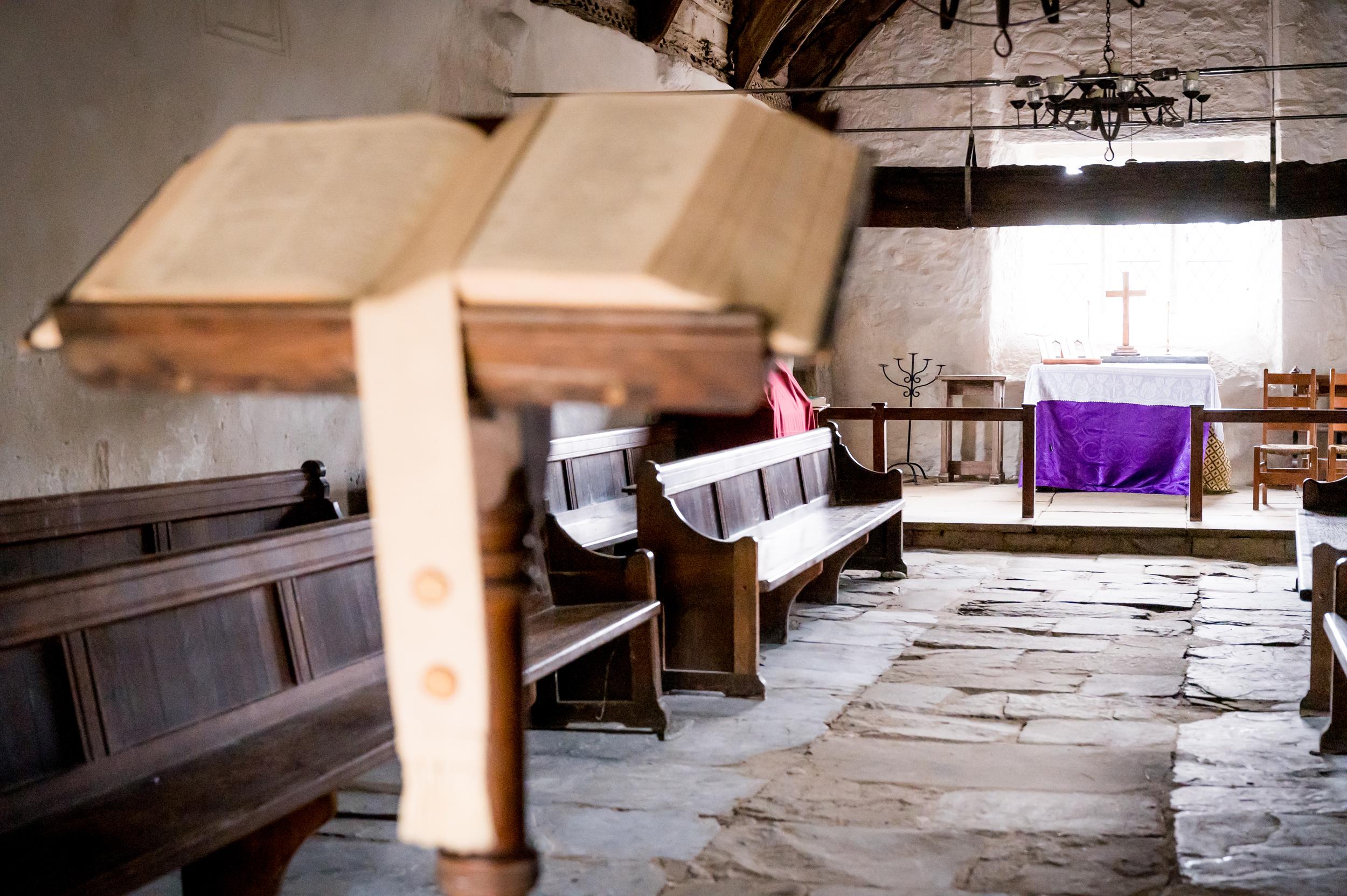Salem Chapel
Pentre Gwynfryn, Gwynedd
If you're Welsh, you'll know the old, eerie painting of Salem instantly.

The ancient church of St Tanwg is situated in the sand dunes at Llandanwg, it is reputed to have been founded in the 5th century by St Tanwg and is one of the oldest Christian foundations in Britain.
Llandanwg, Gwynedd
The present building dates to the early Medieval period. In the churchyard lies the grave of the Welsh poet, Sion Phillips, a contemporary of Shakespeare, who lived at nearby Shell Island, he was drowned whilst crossing from Shell Island to Llandanwg in 1620.
St Tanwg's church is situated within sand dunes on the foreshore, some 20m from the high water mark. It has been frequently dug out of the sand, as it constantly encroaches and buries it. From inside the simple stone walls you can hear the waves on the beach even on the stillest day.
It is medieval in origin, and houses three 5th to 6th century inscribed stones and two cross incised stones. It is thought that it is one of the oldest places of continuous Christian worship in the UK and the site is believed to date to around 435AD.
It is a place widely acknowledged to be ‘thin’, rooted in the earth but within easy reach of heaven. It is a refuge of solace, simplicity and peace.
It is 57ft length x 23ft , constructed of rubble stone with a continuous nave and chancel The nave is circa 13th century The chancel was extended in the early 15th century, and featured an unusually tall east window. It retains its original roof structure, including three eastern arch braced collar beam roof trusses. They were later ceiled with wood boards, on which wall paintings were recorded. A sketch shows the symbols of the evangelists and an opposed angel and cheerful devil.
An oak rood screen was installed, probably in the 15th century. Its top beam remains in place and there are some remains of a later western gallery. Once the parish church of Harlech it was essentially abandoned in 1840 when the new St Tanwg was built in the town. However it refused to cease being a place where God could be found in its ancient stones and simple beauty.
Of particular interest is the eight feet long pillar stone lying by the altar, which dates to the 5th century and may have come from the Wicklow Hills in Ireland. The stone, which weighs three quarters of a ton, was removed from the churchyard in the 17th century,
Pentre Gwynfryn, Gwynedd
If you're Welsh, you'll know the old, eerie painting of Salem instantly.
Llandecwyn, Gwynedd
The church with magnificent views of Snowdonia and Cardigan Bay.
Barmouth, Gwynedd
Towering over the town of Barmouth is the cathedral sized church of St John the Evangelist, primarily funded and furnished by the Perrins family of Lea & Perrins Worcester sauce, it is well worth the climb up the hill to visit.